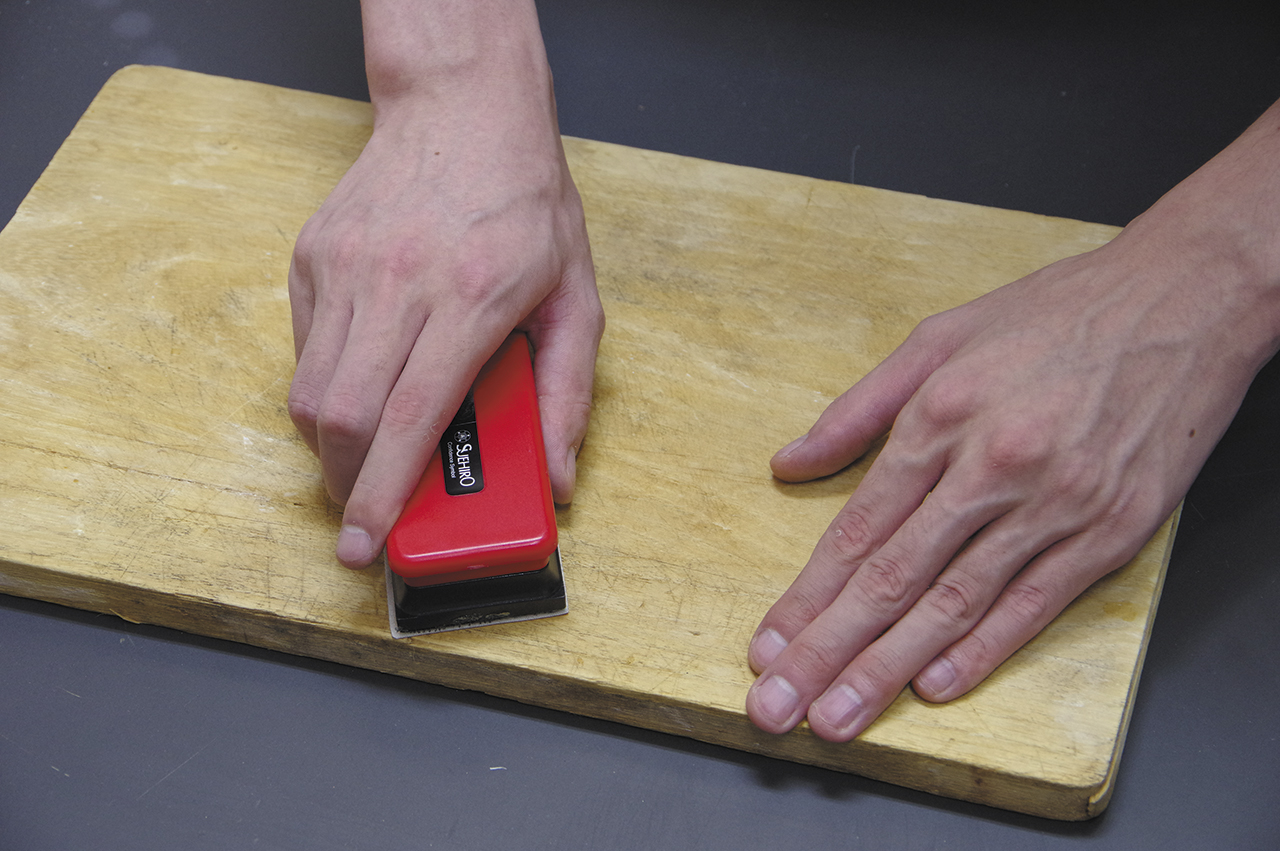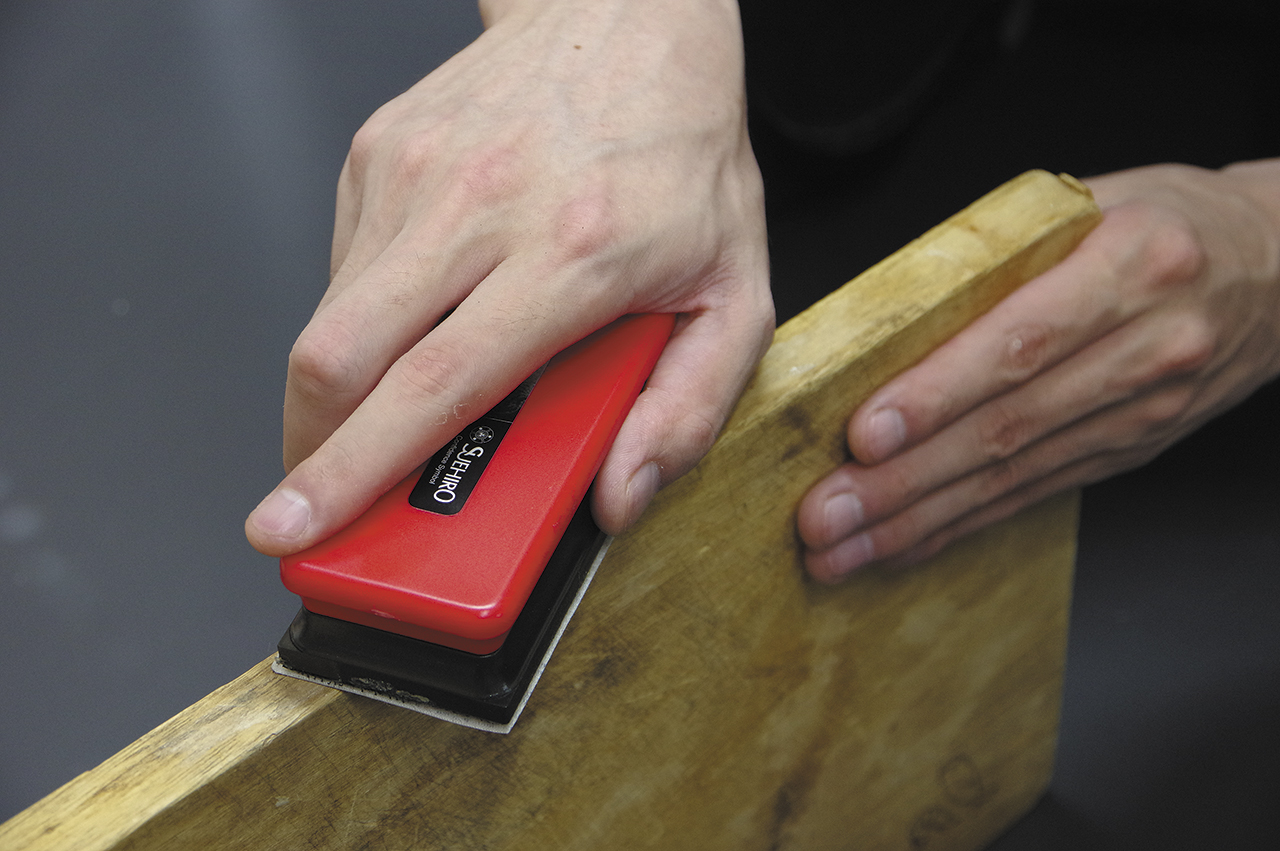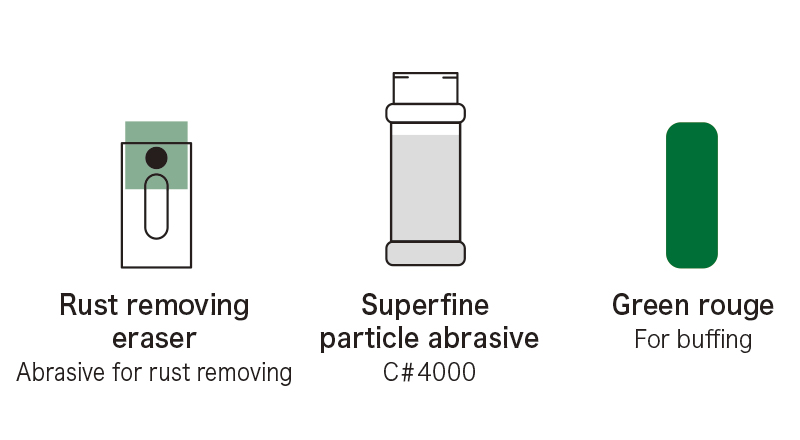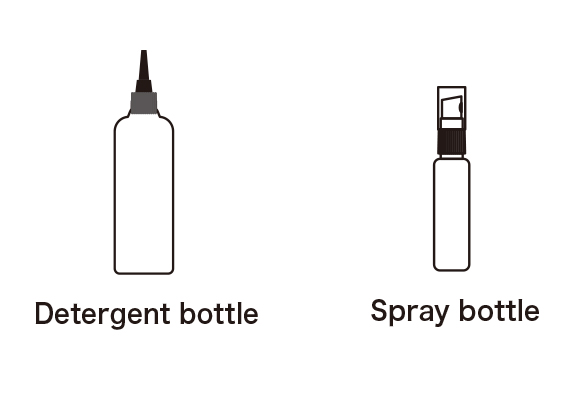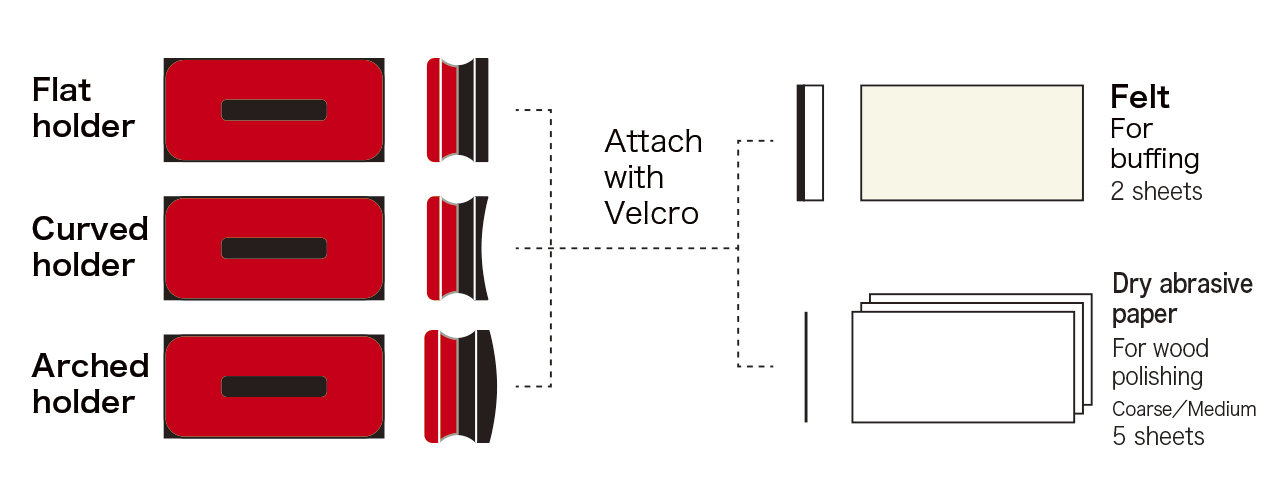Removing rust and polishing
Remove overall rust and dirt by using rust removing eraser, which has elasticity just like erasers and is easy to use even for rough surfaces.
Eraser Whetstone
Remove rust and tarnish using the eraser whetstone.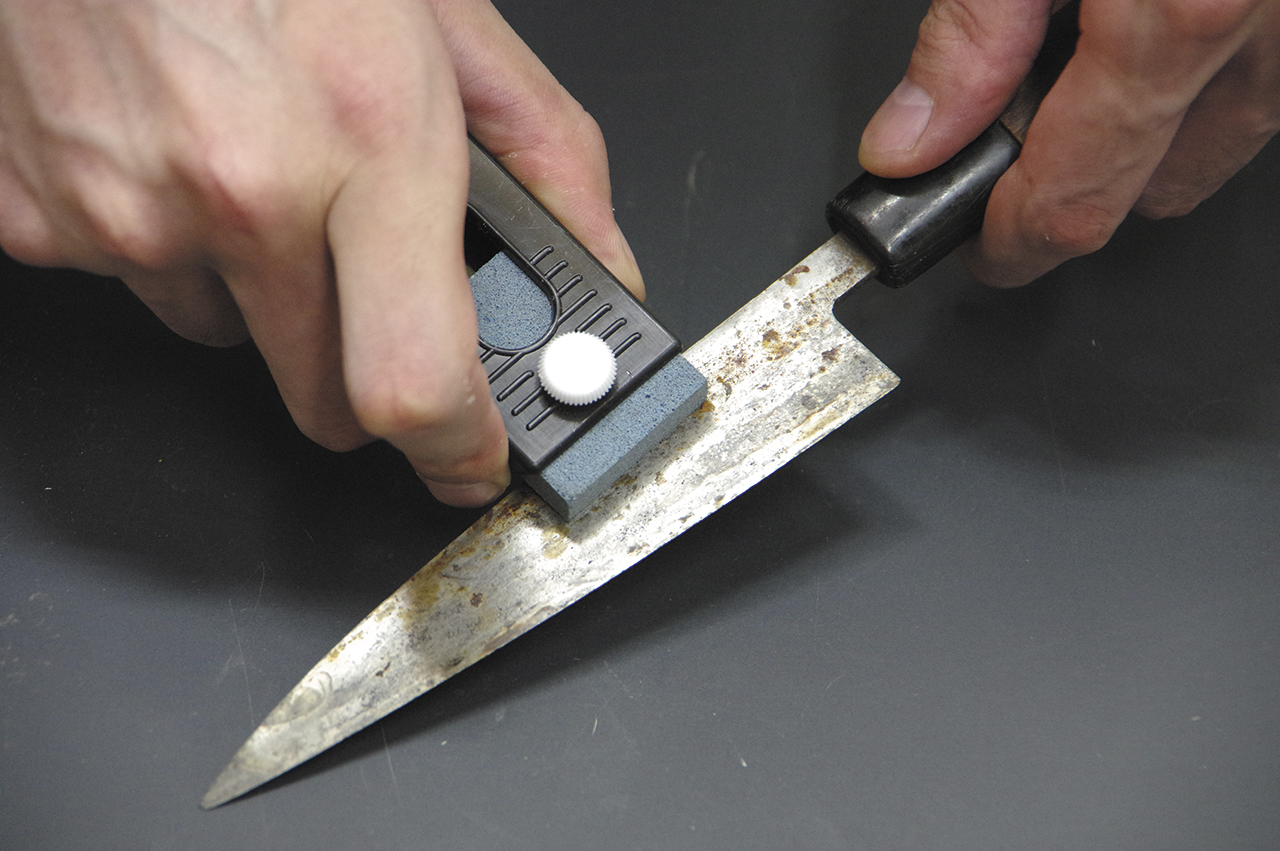
If rust persists, use water-resistant abrasive paper #180. ↓
Rust removing using water-resistant abrasive paper and polish
Wrap water-resistant abrasive paper around wood block, then polish. Spray water onto the abrasive paper and knife before use.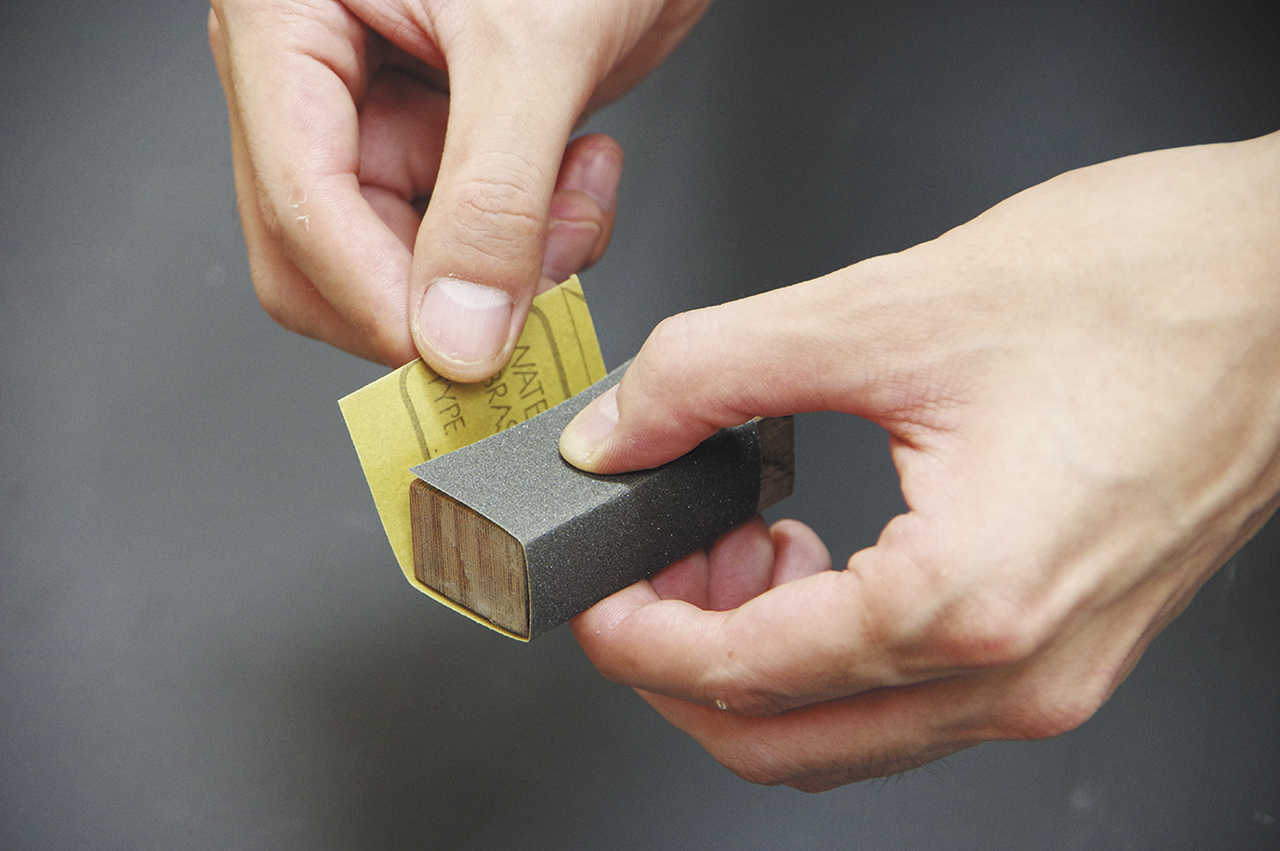
Use water-resistant abrasive paper #180 for persistent rust. Start with #400 paper after using rust removing eraser. For better finish, polish off scratches by using finer water-resistant abrasive paper by stages to #1500.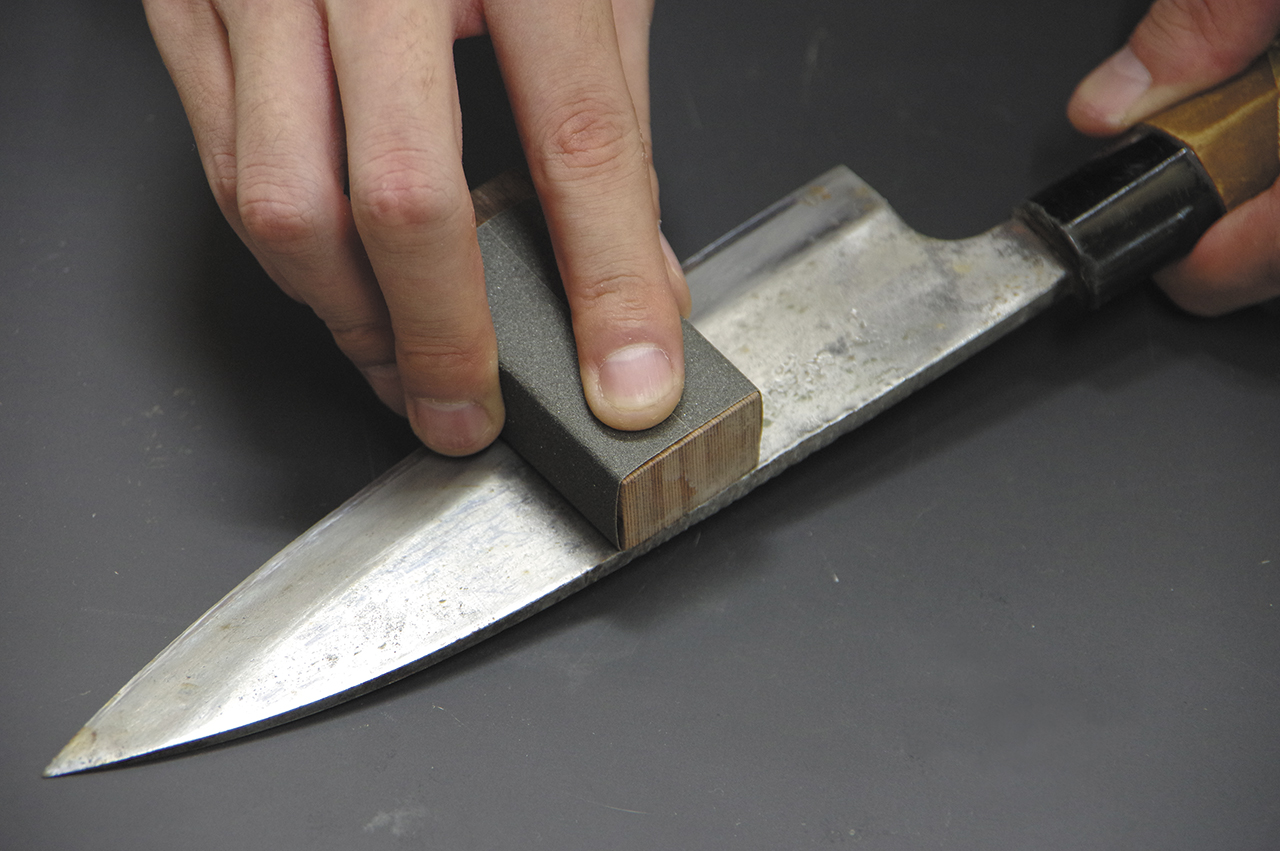
Use abrasive after polishing off scratches and the knife begins to show some sheen.
Polish with superfine particle abrasive C#4000
Apply C#4000 superfine particle abrasive to knife, then pour some dishwashing liquid from a detergent bottle and mix until forming a paste. Spread over knife.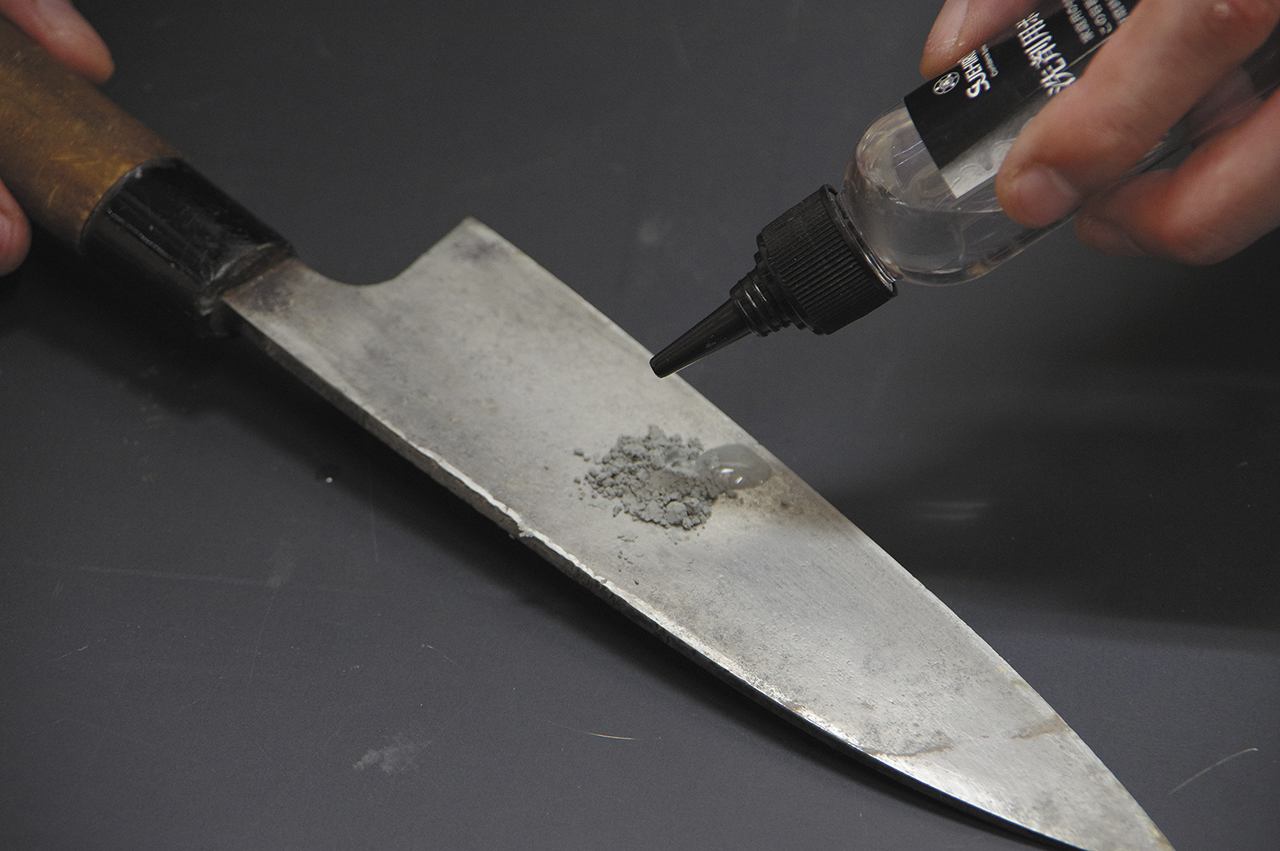
Attach felt to flat handle and polish knife thoroughly.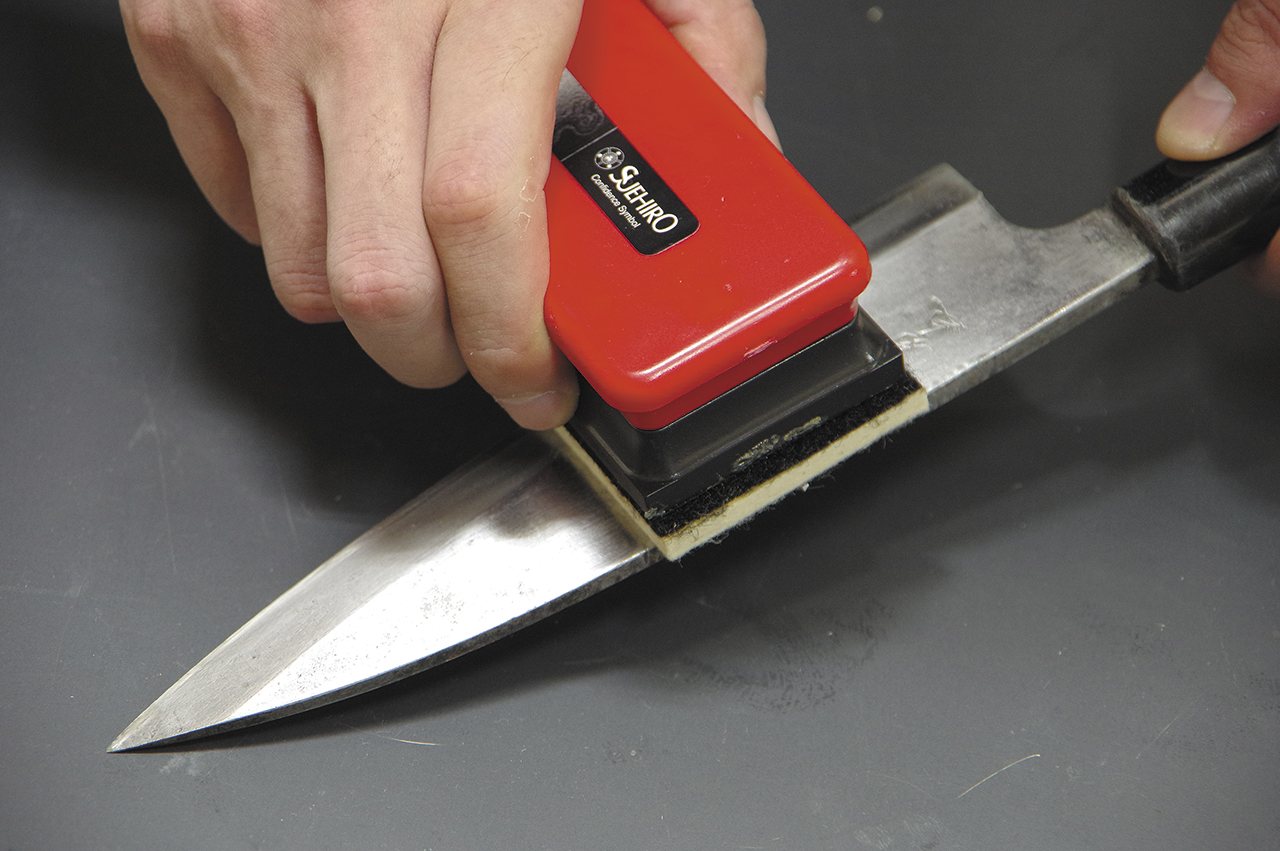
Polish with green rouge
To finish, use blue stick polisher.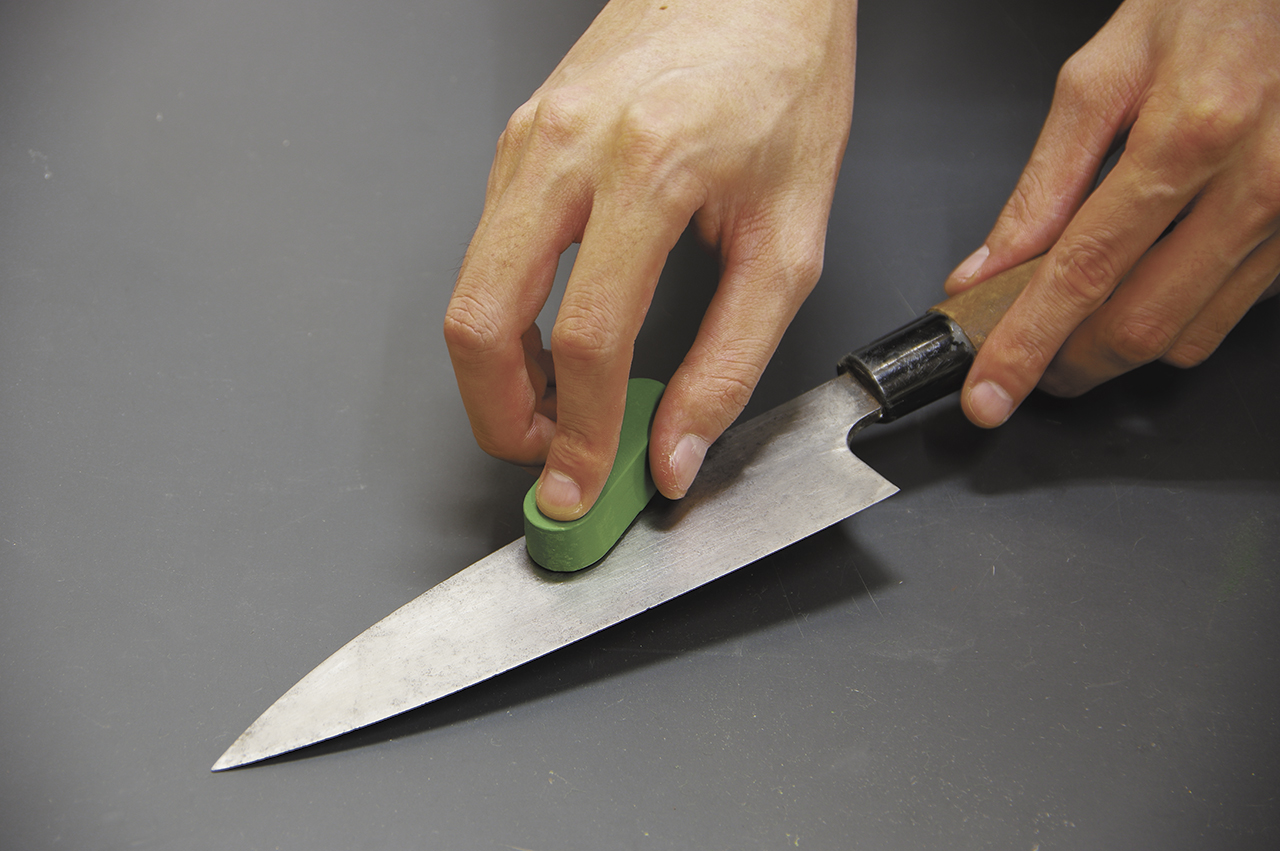
Apply blue stick polisher directly to knife and polish using new felt.
Use dry abrasive paper for wood handle. Select better fit from three different handles depending on the shape of the wood parts to be polished.
Wooden knife handles
The concave handle is suitable for curved surfaces such as knife handles.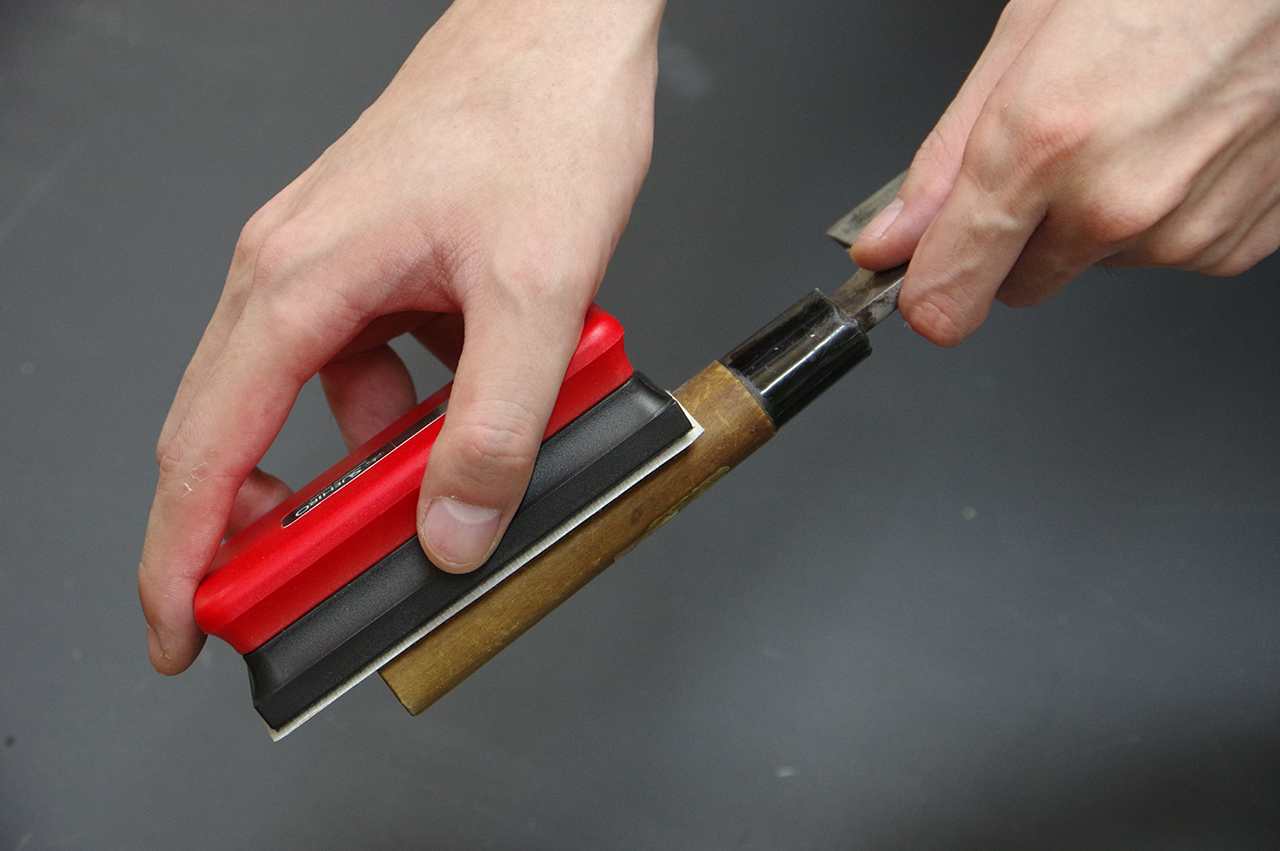
The convex handle is suitable for small areas.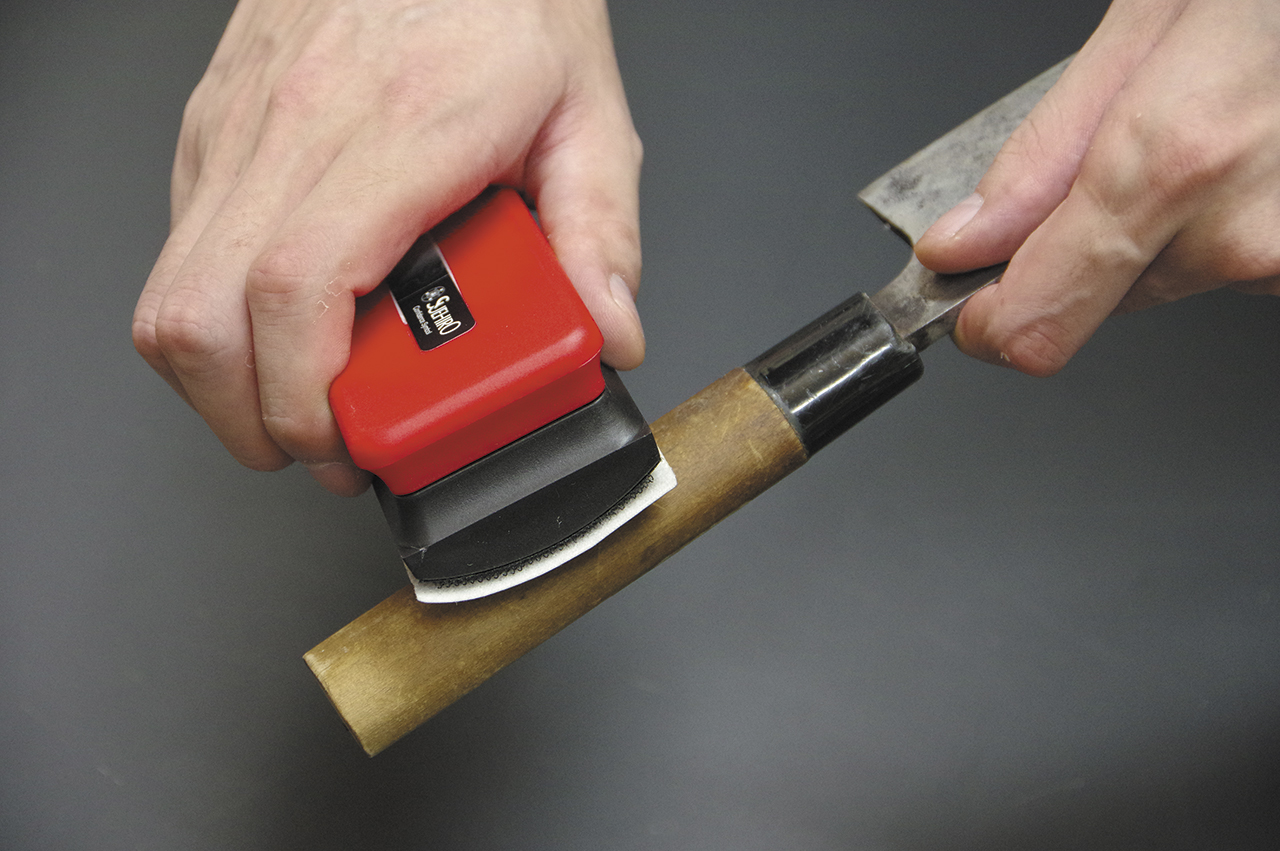 Wooden chopping boards
Wooden chopping boards
Polish all sides and smooth off edges using the flat handle.